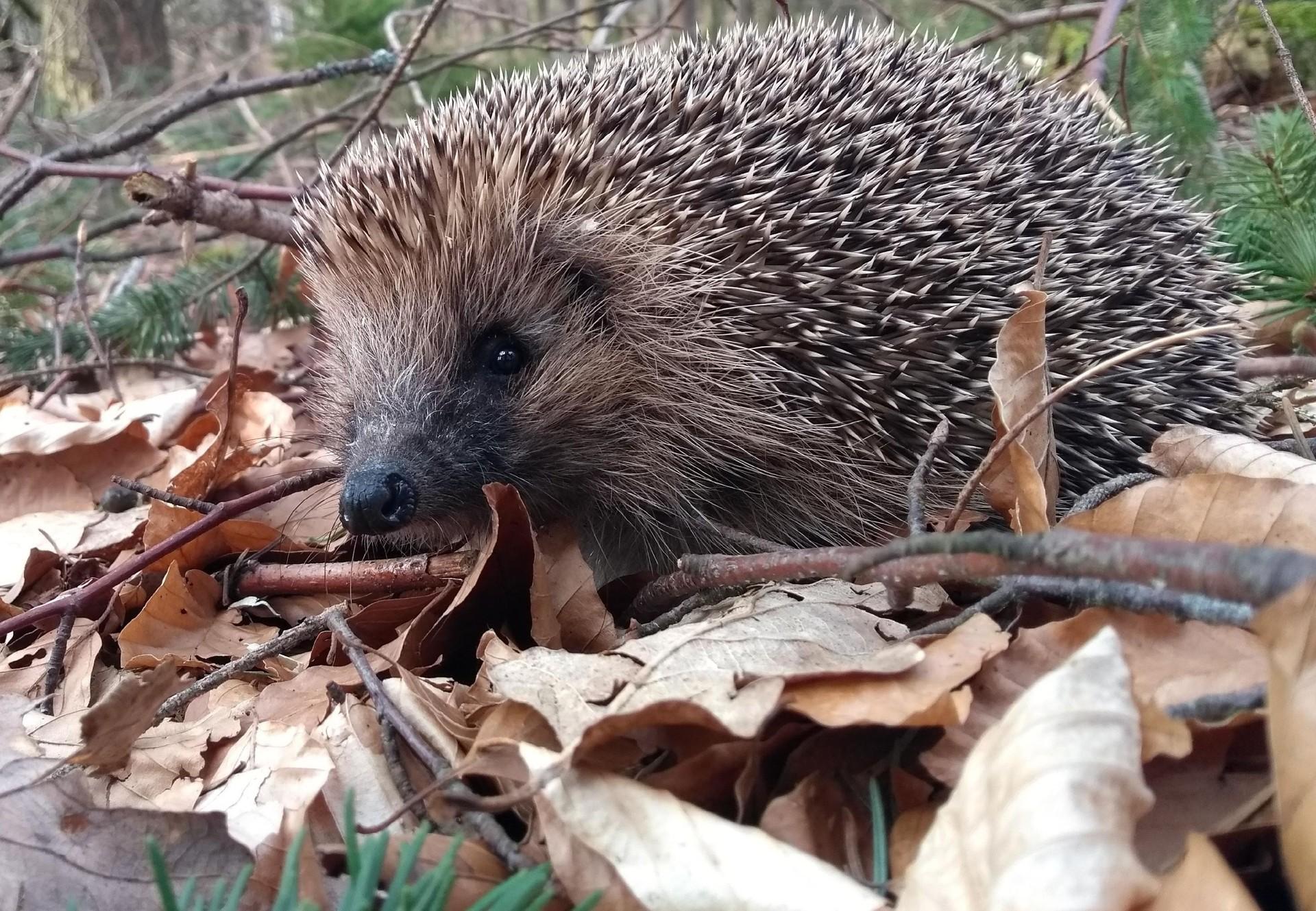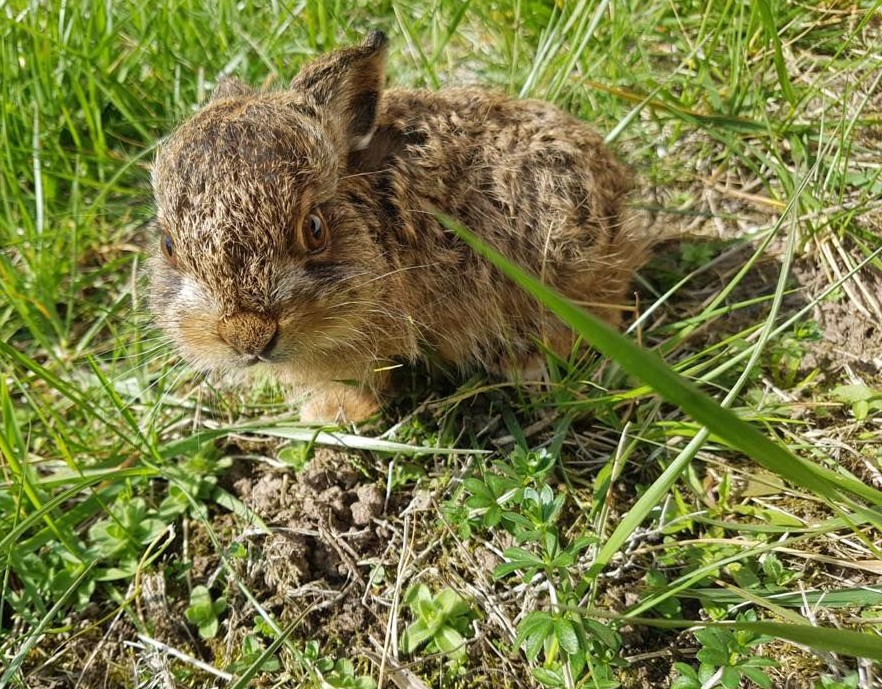
Small animals at TIERART
Dormice, squirrels, hedgehogs & co.
In addition to foxes, wild cats, raccoons and martens, a large number of smaller native animals are also rehabilitated each year at TIERART Wild Animal Sanctuary, run by FOUR PAWS. Hibernators such as hedgehogs or dormice sometimes stay with us over winter if their state of health or weight does not yet allow them to be released into the wild.
Dormice
Dormice belong to the dormouse family. Their name comes from the fact that in our latitudes they hibernate for about seven months from about mid-September to May. Dormice like to use existing hiding places in tree hollows, bird nest boxes or niches in residential buildings as hibernation homes. However, they also dig tunnels in the ground (up to 100 cm deep!), cushion the burrow with leaves and moss and stock it with provisions that are eaten in spring after waking up. In the fall, the animals gather fat reserves and lose 35-50 percent of their body weight during the dormant phase, which lasts several months.
It is typical for the dormouse to have gray fur with a white belly and long bushy tail. The tail is used for balance during skillful climbing and jumping and can even be shed off in case of danger. A sticky secretion emitted from the soles of the feet provides the dormouse with a perfect grip when climbing and even enables it to crawl vertically up a wall without any difficulty.
The main food of the rodent, which grows up to 30 cm (including tail length), consists of buds, leaves, twigs, fruits and tree fruits, such as beechnuts. Its predators include birds of prey/owls and martens in particular, but also domestic cats.
Especially with dormice, we are always surprised under which circumstances or in which places the little ones are found.
For example, a man from the nearby village contacted TIERART, after having bought a concrete mixer in Munich. When he returned home, he found a nest with seven tiny dormice in it when he unloaded the machine. The little ones were finally raised at TIERART.
Another amazing story even attracted the interest of the local press:
A woman wondered about strange noises in the kitchen of her vacation apartment. To be more precise, a loud beeping sound was coming from the cooker hood. She immediately tried to unscrew the hood, but couldn't get anywhere. A helpful neighbor, however, was able to quickly disassemble the hood and free two tiny dormice, completely stuck with grease, from the blower's motor. Lucky little dormice!


Squirrels
There's probably no one who doesn't like these day-active reddish-brown critters with bushy tails and finger-like front paws and doesn't enjoy watching them move nimbly through the trees or busily gathering food supplies.
The typical bushy tail is about 20 cm long, almost as long as the rest of the squirrel's body. Not only does it serve to balance itself perfectly while living in the trees, it also plays an important role in communicating with conspecifics and in thermoregulation when the squirrel covers its body with it to protect itself from the cold.
The squirrel's main diet consists of energy-rich seeds and fruits, but they also eat flowers, buds and mushrooms. Birds' nests are also not infrequently plundered by them. Squirrels do not hibernate and also build up few depots for the cold season. Instead, they build up food stores in the fall to feast on in the winter when food is limited. By hiding seeds and tree fruits, they help spread tree and bush species.
Mostly small squirrels are brought to TIERART wildlife station after the goblet (= nest of the squirrel) has been destroyed. This can happen, for example, by predators such as birds or cats, or during heavy rain or storms. If the mother then does not fetch the young and transports them to another location, the babies are dependent on human help. In such cases, complete litters end up at TIERART and keep our animal keepers busy day and night.
For example, in this case from the spring of 2018:
The squirrel burrow, which was located in the garden of a private house, was completely destroyed by a jay. Presumably, the bird also ate young animals before it could be chased away by the inhabitants of the house. They found 5 blind and naked babies on the terrace, which they carefully put back to an elevated position near the destroyed nest. The excited mother was still nearby, but unfortunately did not retrieve the young even after 3 hours. Due to the cold weather, it was decided to bring the babies indoors. The following morning we were informed and picked up the squirrels directly. Fortunately, they had been perfectly provided with warmth and electrolyte solution overnight. The babies, still naked, were only about 7 days old, weighed an average of 32 g, and were initially fed by our caretakers around the clock about every hour.
Hedgehog
The typical spiny coat makes the hedgehog indistinguishable and serves primarily as a defense against predators such as badgers, martens, foxes and eagle owls.
Human intervention in nature is increasingly depriving the hedgehog of its original habitats. Intensively used agricultural areas with monocultures and a lack of hedge strips offer him no hiding and nesting opportunities. Insecticides, chemical fertilizers and weed killers also deprive the nocturnal insectivore of its food base and pose a threat to its health. It is therefore not surprising that hedgehogs are increasingly found in residential areas. Parks, cemeteries and natural gardens have become important habitats. Here hedgehogs find hiding places in dense bushes, under old tree roots, in piles of leaves and compost or in cavities under garden sheds.
During the winter months when food is limited, from around October/November, hedgehogs hibernate. Heart activity, respiration and body temperature are greatly reduced during this time. Fat pads, which the animals have gathered during fall, serve as energy reserves. Young hedgehogs and animals weakened by parasites or diseases often have no chance to reach the hibernation weight of at least 500g in time, which is necessary for survival. Such animals cannot survive the winter without human help and belong in expert hands.
At TIERART, too, many hedgehogs hibernate every year, to be released back into the wild in spring, healthy, lively and round as a ball.


Brown hares
Brown hare populations have declined sharply due to human impact and the species is considered endangered. This is primarily due to the dwindling of suitable habitats as a result of the intensification of agriculture and more and more monocultures.
The shy brown hare is nocturnal and lives as a loner outside the mating season. It is a pure herbivore and requires up to 1,400 g of food per day consisting of green plants, seeds and bark.
The typical hopping locomotion of the hare is based on the extreme length of its hind legs. The strong and well-muscled hind legs enable the hare to jump up to 3 meters wide and 2 meters high. On the run, it reaches speeds of up to 80 km/h. To confuse predators, it makes abrupt changes of direction. This is called "hooking".
The setting season begins in March. European hares are so-called precocial animals, which means that their babies are born with fur and open eyes. The mother lays the young alone in a meadow or field and comes to nurse several times a day. In order not to draw attention to the young, she then quickly moves away again.
Unfortunately, every year TIERART Wild Animal Sanctuary receives countless young hares that have been "collected" by walkers for no reason and do not really need any help. Many people intervene hastily, assuming that a baby wild animal found alone has been abandoned by its mother and is no longer being cared for.
Raising field hares is very difficult, especially when they are very young animals that have only been provided with the mother's milk, which is urgently needed for their immune defense, for a short period of time.


Our goal is to release native wild animals back into the wild - we do everything we can to achieve this in our daily animal care!





